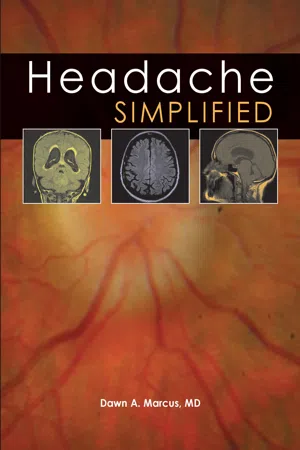
- English
- ePUB (mobile friendly)
- Available on iOS & Android
About This Book
This practical book provides a handy reference for the doctor confronted with patients complaining of headache. Headache is one of the most common complaints seen in the outpatient or ambulatory care setting, and may be caused by a wide variety of conditions. This book clearly explains up-to-date headache epidemiology, impact, and pathogenesis, and walks the reader through the steps to evaluating and treating the patient presenting with primary or secondary headache disorders. Also included are reviews of common headache comorbidities, including cardiovascular disease and stroke, epilepsy, fibromyalgia and mood disturbance. Copious use of easy-to-understand figures, tables, and algorithms make this book a useful and practical tool in the clinic. Guidance on selecting diagnostic tests and specific treatment protocols are provided. Treatment recommendations are evidence-based with full referencing and include emerging therapies. Sections on evaluating and treating headaches in children, women during pregnancy, and the elderly complete this comprehensive reference. The likely readership will include the following: neurologists, general physicians, doctors in training, hospital pharmacists, primary care physicians, nurses and nurse practitioners.
Frequently asked questions
Information
Chapter 1
Epidemiology of headache
Introduction
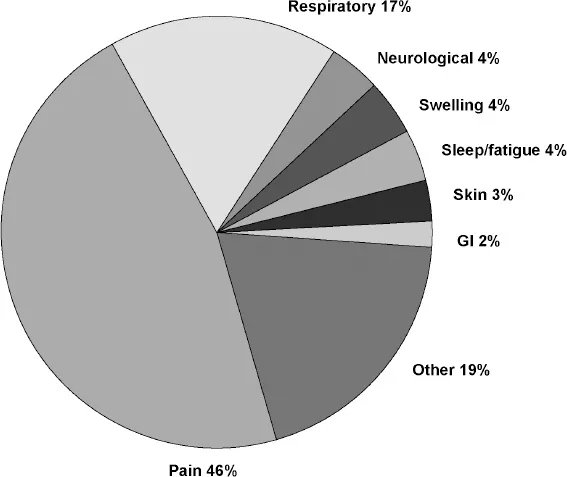
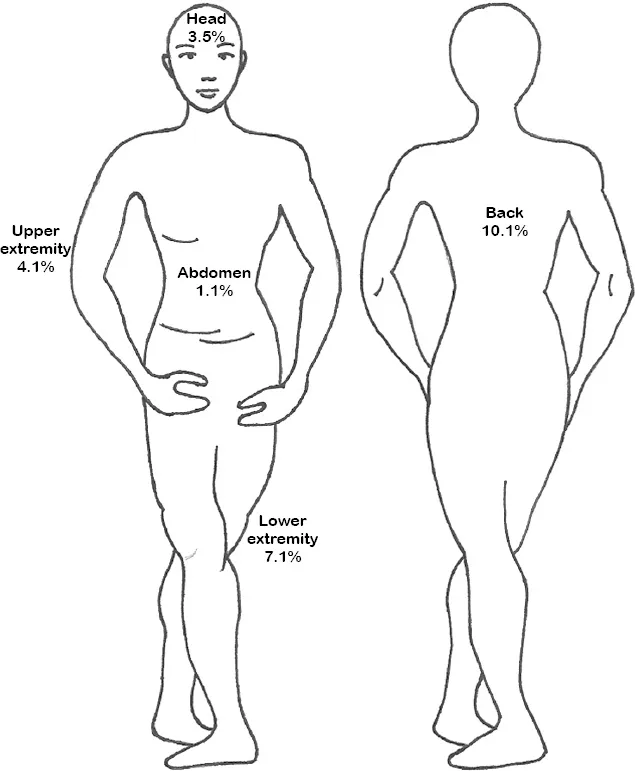
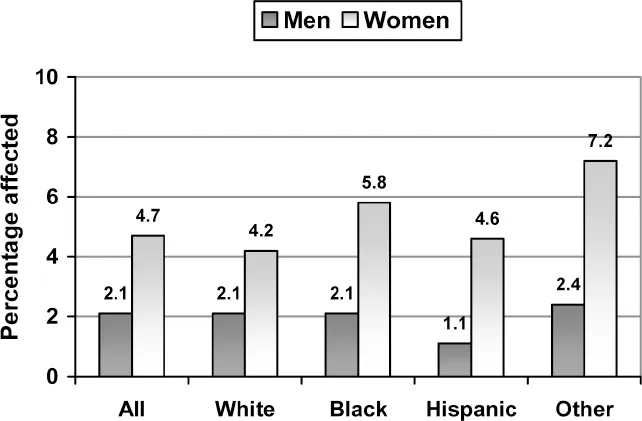
Headache epidemiology
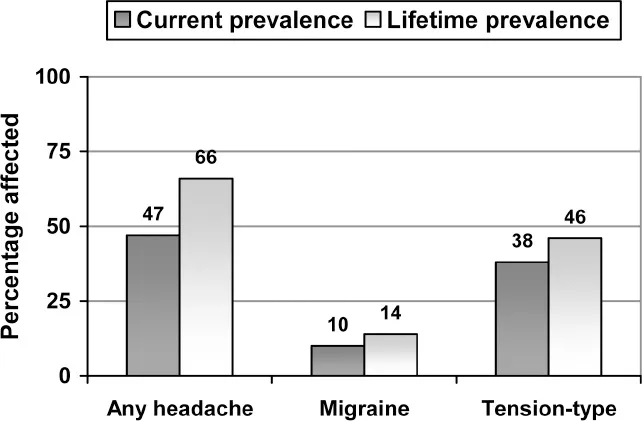
| Table 1 Common causes of head pain. | |
| Primary headaches | |
| • | Migraine |
| • | Tension-type |
| • | Cluster |
| Secondary headaches | |
| • | Infection |
| – Viral illness | |
| – Respiratory infection | |
| – Meningitis | |
| • | Inflammatory |
| – Giant cell arteritis | |
| – Systemic lupus erythematosus | |
| • | Intracranial pathology |
| – Cerebrovascular disease | |
| – Subdural hematoma | |
| – Tumor | |
| – Vascular malformation or aneurysm | |
| • | Medications |
| – Analgesic overuse headache | |
| – Alcohol-induced headache | |
| – Caffeine, opioid, or estrogen withdrawal | |
| • | Musculoskeletal |
| – Temporomandibular dysfunction | |
| – Cervical myofascial or joint dysfunction | |
| • | Neuralgias |
| – Post-herpetic neuralgia | |
| – Trigeminal neuralgia | |
| • | Systemic illness |
| – Anemia | |
| – Thyroid disease | |
Adult headaches
Acute headaches
Table of contents
- Cover Page
- Title Page
- Copyright Page
- Contents
- Preface
- Glossary of terms
- About the author
- Acknowledgements
- Chapter 1: Epidemiology of headache
- Chapter 2: Diagnostic testing in the headache patient
- Chapter 3: Distinguishing primary from secondary headaches
- Chapter 4: Pathophysiology of chronic headaches
- Chapter 5: Treating headaches
- Chapter 6: Headache comorbidity
- Chapter 7: Complementary and alternative therapies
- Chapter 8: Managing headaches in children and women
- Chapter 9: Emergency department treatment of headache
- Chapter 10: Uncommon and geriatric headaches